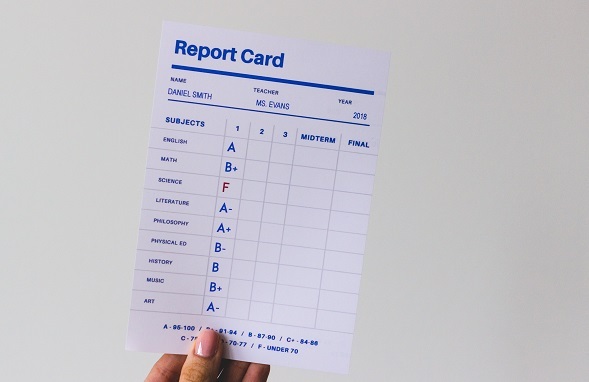
 Data Structure
Data Structure Networking
Networking RDBMS
RDBMS Operating System
Operating System Java
Java MS Excel
MS Excel iOS
iOS HTML
HTML CSS
CSS Android
Android Python
Python C Programming
C Programming C++
C++ C#
C# MongoDB
MongoDB MySQL
MySQL Javascript
Javascript PHP
PHP
- Selected Reading
- UPSC IAS Exams Notes
- Developer's Best Practices
- Questions and Answers
- Effective Resume Writing
- HR Interview Questions
- Computer Glossary
- Who is Who
What is the full form of CGPA?
Introduction
Cumulative Grade Point Average (CGPA) is a well-recognized scoring and evaluation system which is acknowledged worldwide. Whether a student is applying for a job or higher education acquiring minimum CGPA is always the basic eligibility.

The range of CGPA differs in various countries and educational systems. In this article we will briefly discuss CGPA, method of calculating CGPA, advantages and disadvantages of using CGPA and its conversion to other grading systems.
Definition and Meaning
A student's academic strength can be measured through the Cumulative Grade Point Average (CGPA). This calculation gives an overall understanding of the academic achievements of the student which is then graded from A to F. This is an average grade of all the GPA acquired by a candidate throughout all the semesters. Here GPA refers to Grade Point Average received in every semester. CGPA calculation is different in different countries.
Calculation methodology
To calculate your CGPA you can follow the steps provided below
Firstly, get your GPA for each semester and the total credit hours for each semester.
For example, let us assume that for Semester A you received 2.34 GPA with 10 credit hours, Semester B- 3.46 GPA with 10 credit hours, Semester C- 3.49 GPA with 10 credit hours, Semester D- 3.45 GPA with 10 credit hours.
Secondly, you are required to calculate the total points acquired for each semester by multiplying GPA of each semester with their credit hours.
Following the above step we get total points for Semester A as 23.4 (2.34*10), Semester B as 34.6 (3.36 * 10), Semester C as 34.9 (3.49 * 10), Semester D as 34.5 (3.45 * 10).
After this you are required to add all the credit points received in all the semester. Taking from the above example the sum would be 40 credit hours (10 + 10 +10 +10).
Now, find the cumulative total points by adding all the total points of each semester. In this case the total points would be 127.4 (23.4 + 34.6 + 34.9 + 34.5).
Lastly, divide the cumulative total points by the sum of credit hours. Here, the CGPA would be 3.18 (127.4/40).
Advantages and disadvantages
Some of the advantages of using the CGPA system of grading includes
The grades will help to identify the students' strengths and shortcomings, and they will seek to improve their deficiencies and develop their strengths. Also, they will enhance their strengths and advance them.
The grading system reduces the pressure on students to score high marks because their report cards no longer contain the marks they receive rather it contains grades. This encourages the students to score better grades.
CGPA depends on the advanced pattern of education because it involves assessment of various learning techniques and academic performances like assignments, presentations, projects, and other kinds of submissions besides semester exams.
Because each person has a distinct level of understanding, teachers are able to focus more on the average and below average students and better explain concepts to them. This becomes easier through the CGPA which divides the students into categories such as brilliant, average, and below average students.

Knowing a child's grades helps parents understand their child's potential and how best to support them. For example, some children need extra coaching, which parents can arrange if they are aware of the child's academic standing at the time.
Some of the disadvantages of using the CGPA system of grading includes
One of the problems with the grading system is the decline in student performance. Students don't put as much work into their studies since they believe they can easily achieve their goals. For example, if a student wants to attain an A, he knows that he will easily attain that goal by scoring 90 marks, therefore he doesn't go for 100.
The grading system is unable to accurately reflect the pupils' performance. Instead of learning about a student's true aptitude, we can only learn about the grade they received.
Instead of concentrating on achieving the top grades, students only care about getting the passing grade. This decrease in competitiveness among students leads to laziness and a decline in intellectual ability.
Because the grade range for an A is between 90% and 100%, the brighter kids may be demotivated by the grading system because a student who receives a 90% falls under grade A while a student who receives a 95% also falls under grade A.
Conclusion
CGPA is a standard way of measuring academic performance of a student. It is accepted all around the world but its scale of measurement is different. In other words, the Indian scale of CGPA is different from the German CGPA scale or the American CGPA scale or the British CGPA scale.
FAQs
Q1. What is SGPA?
Ans: SGPA stands for Sessional Grade Point Average or Semester Grade Point Average. This scale measures the academic performance of a student for the entire session.
Q2. What are Credit Points?
Ans: Credit Points refers to the amount of work that is provided in a particular time period which is usually a semester. This can be attained by attending classes and all necessary activities like presentations, submissions, etc.
Q3. What is one disadvantage of using CGPA?
Ans: Assignments, projects, and attendance are all taken into consideration when determining grades. Students therefore do well in these activities and receive grades rather than doing well on tests, majorly due to laziness.

